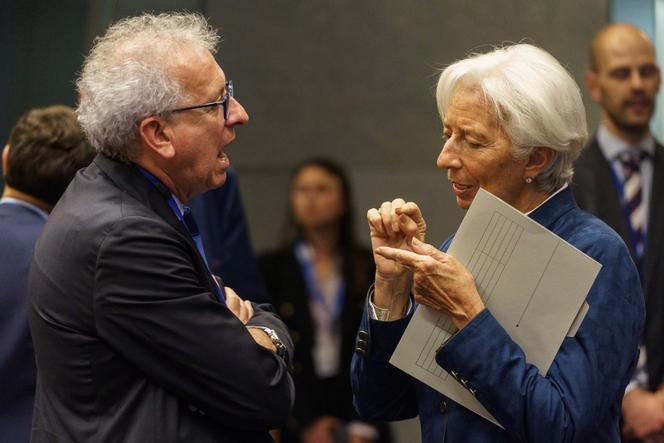


At a recent meeting took place between leading American financiers and one of their contacts in Paris. "So, what's going on in Europe, then? Why aren't you doing anything about your growth?" They decided not to put another penny into Europe, incredulous at the apparent powerlessness of public authorities in the face of economic stagnation in the eurozone.
European growth has lagged behind that of the US since the 2008 financial crisis, but the gap widened further after the Covid-19 pandemic. Since the fourth quarter of 2019, US growth has been 9.4%, more than double the 4% of the eurozone – and France's 3.8%. There are many explanatory factors: The energy shock has been stronger in Europe due to the geographical proximity of the war in Ukraine; the US is a net exporter of hydrocarbons; budget spending is lower in Europe, while the White House has granted huge credits in an attempt to reindustrialize the country... But another reason, increasingly put forward, is what the European Central Bank (ECB) has done.
The ECB will meet this week and, on Thursday, September 12, could announce a cut in its interest rates, from 3.75% to 3.5%. This would be the second cut, following an initial decline from 4% to 3.75% in June. But isn't this too little, too late, at a time when European growth is sluggish and seems to have slowed even further in the third quarter?
"The ECB hasn't pulled it off, unlike the Fed [Federal Reserve, the US central bank]," said Mabrouk Chetouane, head of strategy for international markets at Natixis IM, an asset management company. He would like to see much more vigorous action from the monetary institution: "We need to go faster and harder, by announcing a tunnel of rate cuts." The same argument is made by Nicolas Goetzmann, head of economic research at Financière de la Cité, another asset management company.
"The ECB made a mistake: In order to reduce inflation, it sought to slow domestic demand, when this was not the problem."
To understand this criticism of the Frankfurt-based institution, we need to go back to the end of the pandemic, at the end of 2021. Without exception, the return of inflation took all central banks by surprise. In the US as in Europe, the causes seemed to be the same: disrupted supply chains (shortages of microprocessors, raw materials, overloaded shipping lines, etc...) and soaring gas prices when Vladimir Putin cut off supplies to Europe. The figures were indeed similar: In the eurozone, the peak of inflation was 10.6% in October 2022; in the US, it was 9.1% in July 2022. Since then, both curves have been falling, and inflation has returned to 2.2% and 2.9% respectively.
You have 56.17% of this article left to read. The rest is for subscribers only.
